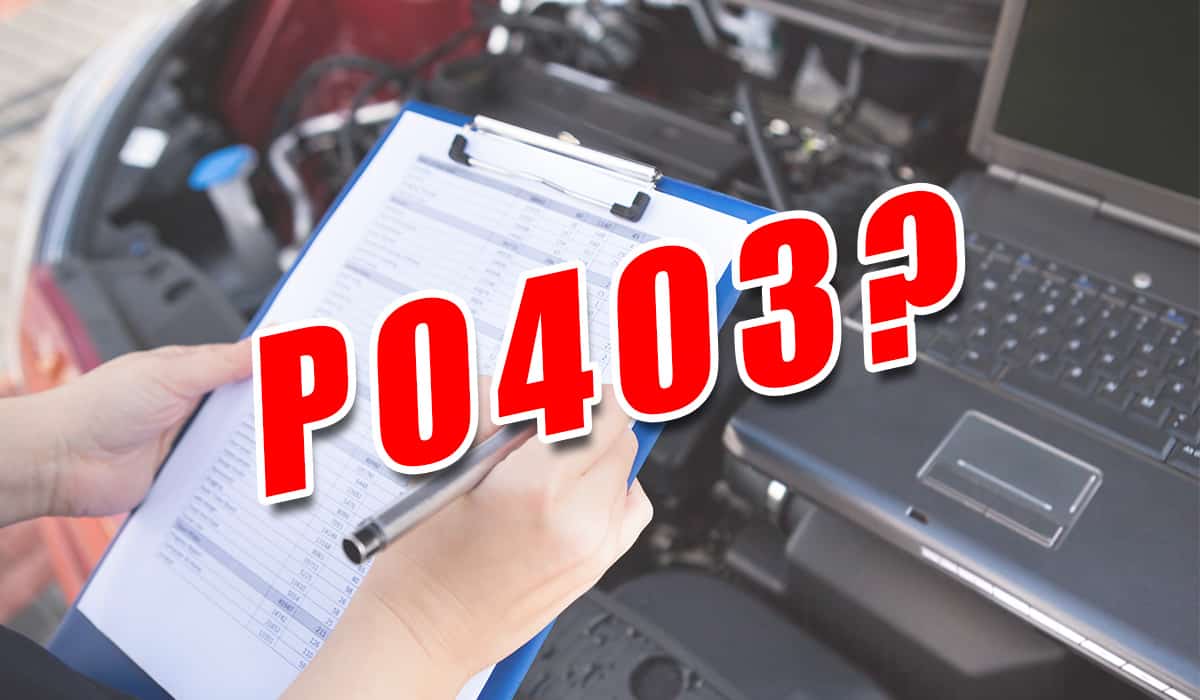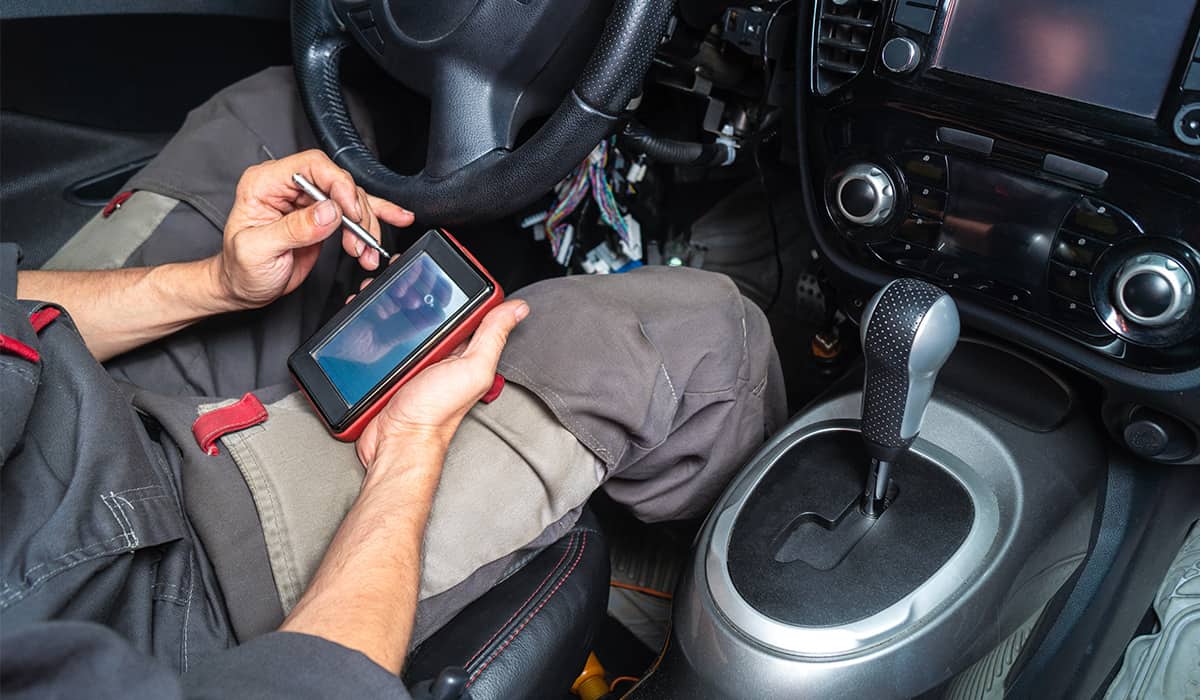DTC P0403 On 6.0 Powerstroke Engines: How To Identify And Fix The Error Code
The check engine light is never a welcome sign. But this little light can indicate a range of issues with a vehicle, and the actual error code that results is what you need to pay attention to. So, what does it mean when your car shows the DTC P0403 error code?

The DTC P0403 error code means there’s an issue with the exhaust gas recirculation (EGR) system of your vehicle. If this error code comes up, you may notice decreased vehicle performance and increased vehicle pollution. These fumes can be dangerous, so it’s best to get your car serviced immediately.
Let’s take a closer look at what exactly this error code indicates, how to fix the issue, and whether it’s safe to drive your car.
What Is a P0403 Code?
The P0403 DTC code is a general error code that can pop up on any vehicle with a 6.0 Powerstroke engine. This code generally indicates a problem with your vehicle’s exhaust gas recirculation (EGR) system.
Because this code is a general code, several different malfunctions can cause it to pop up. In most cases, however, you will see the code when there’s a wiring problem somewhere in your EGR system.
This wiring problem could be something obvious (like visibly cut or damaged wires) or it may be occurring because of a failure within the wiring. When your car shows a P0403 code, it’s best to take it to a mechanic so that they can assess how serious the issue is.
Below is a full list of possible issues that may cause your vehicle to show a P0403 code:
- A valve short in the control circuit
- An open valve in the control circuit
- The EGR has been deleted
- The solenoid is damaged
- The EGR valve is defective
- There’s a problem with the EGR vacuum
- There’s a hole in the line leading to the EGR vacuum
- Wiring of the EGR system is loose
- Wiring of the EGR system is damaged
As you can see, there are many reasons your vehicle might show the P0403 code, many of which you can’t investigate without the proper equipment. That’s why it’s best to take your vehicle to a professional for evaluation.
Is the P0403 Code Dangerous?
The P0403 code isn’t immediately dangerous, but it can become more dangerous if you continue to drive your car without addressing the situation.
This code indicates a problem in your EGR system, which is the system that lowers your vehicle’s environmental impact.
When this system is damaged, your car is likely polluting more than it normally would. While this doesn’t sound particularly dangerous to you, the EGR system is responsible for many aspects of the performance of your vehicle, and these aspects may diminish if you continue to drive your car.
A diminished performance can include difficulties accelerating, noises in the engine, as well as strange smells in the cabin.
That being said, this code doesn’t mean your car needs to be towed to the shop. However, you should take it there as soon as possible.
If you don’t fix your vehicle after the P0403 code and you continue to drive it (more than just to the shop), then you run the risk of your engine overheating and causing lasting damage to your vehicle.
Additionally, a vehicle with a P0403 code will often emit unsafe amounts of fumes that would cause your vehicle to fail an emissions test. These fumes could also cause the driver of the vehicle to feel unwell. It’s best to have the issue repaired right away and not to drive your vehicle except to somewhere where it can be repaired.
How to Identify the Code

The first sign of a P0403 code is that your check engine light will come on. When this happens, you’ll want to grab your vehicle scanner (on Amazon) and hook it up to your car.
If the scanner returns multiple vehicle codes, then your car likely has engine problems. If the scanner just returns P0403 and no other codes, then there’s a wiring problem in your EGR system.
You can also drive the vehicle with an OBD-ii scan tool attached to it, having someone monitor the live data it returns.
Other signs that your car is experiencing a P0403 error include:
- Thumping or knocking sounds in the engine
- Strange smells in the vehicle cabin
- Your vehicle doesn’t accelerate properly
- Your vehicle is experiencing low fuel economy
If your vehicle is experiencing any of these symptoms, it’s best to take it to a certified mechanic immediately.
How to Fix the Problem
It can be difficult to determine how to fix a P0403 code because several different issues in the vehicle can cause it. The best course of action is to start by checking the wiring and connections of the EGR system.
If, during the wire inspection, you notice damaged or disconnected wires, then replacing or repairing them may solve the issue. But, if all the wires are intact when you check, then it’s likely the valve vacuum solenoid that needs to be repaired.
It can be difficult to know for sure when a valve vacuum solenoid is malfunctioning, so it’s recommended to take your vehicle to a licensed repairman if you expect this to be the case.
If you’ve already done both of these things, the next course of action is to replace the connector to the EGR solenoid. Sometimes, these connectors develop leaks or holes that can lead to the P0403 error.
You can also check the vehicle’s vacuum line to see if it has any leaks or holes. Replacing it might also clear up the error code.
One final thing to know as you attempt to resolve a P0403 code is that it can be caused when parts of the vehicle are exposed to too much water. If the vehicle you are inspecting has recently been subjected to large amounts of water, all parts of the EGR and solenoid system may need to be replaced to clear up the code.
Can You Drive With a P0403 Code?
It’s not considered safe to drive with a P0403 code. This is because when your car is returning this code, it means that you, as the driver, could be exposed to harmful fumes.
Plus, the engine may overheat when you drive it, causing other issues like melted spark plugs and increasing your risk of an engine fire.
That being said, if you only live a few miles from a repair shop, it’s probably okay for you to drive it over there. You will need to be cautious, however, and you’ll want to pull over if you smell anything strange or notice that your car may be overheating.
Recommended Reading
- The 4 F150 Engines You Should Avoid
- 4 Most Common Problems With The Ford F150 (Answered!)
- What is the Best Used Ford Truck to Buy?
- 3 Ford Raptor Years To Avoid & Why
- Ford F-150 Size: Weight, Height, Length, Width, and More
- When Did Ford Change F-150 Body Styles?
- P0341 on 6.0 Powerstroke Engines
- What Are the Best Spark Plugs for Ford F150? (Explained!)
- What is the Biggest Tire You Can Put on a Stock Ford F150?
Final Thoughts
All things considered, if your vehicle is returning a DTC P0403 code, it’s best to take it to the repair shop right away.
This is a general code, and it’s difficult to know exactly what needs to be repaired without having a mechanic look into it. It’s also advised that you don’t drive much in the meantime, as this may cause additional damage to your car.
